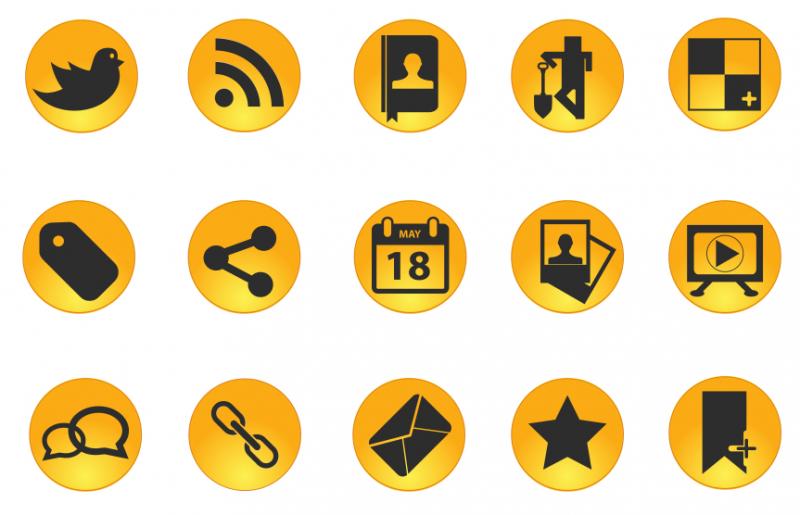The 7 Social Media Habits of Highly Effective Health Reporters
 "Social media is like flossing: you don't have to like it, you just have to do it, every day."
"Social media is like flossing: you don't have to like it, you just have to do it, every day."
That was the first tip from Mother Jones new media editor Laura McClure for California Endowment Health Journalism Fellows gathered this week in Pasadena. She's one of our past Fellows, and her tips are applicable to any journalist, not just those interested in covering health.
To improve your health reporting and promote your work online, you'll want to consider McClure's other tips, below. You also can see her presentation here.
The 7 Social Media Habits of Highly Effective Health Reporters - Laura McClure
2. It's easier to fit social media into your day if you work toward a goal and team up with a buddy. Is your goal to find more sources and story tips? Or to promote your own work?
3. Two platforms you can now ignore: Digg and MySpace after their revamps.
4. Explore these platforms instead: ReportingonHealth (post your story or blog), AHCJ, WebMD, other health communities. And:
Twitter: An "aphorism generator," "iterative reporting tool" (where you open up your notebook and share your reporting in progress), and "water cooler for influential journalists." McClure suggests that quotes pulled from Twitter (particularly from public officials) are fair game to use in your stories.
Facebook: "Evil," (McClure doesn't trust founder Mark Zuckerberg's privacy policies) but helpful for story promotion and keeping tabs on youngsters, tea partiers, and memes.
Huffington Post: All hail Arianna, the fairy godmother of page views for important stories.
Stumbleupon: Good web traffic generator. Make sure to "disco," or discover, each photo in your slideshows.
Linked In: Listings of professionals, experts. Good for finding contact and biographical info for story sources.
YouTube, Vimeo: Useful for finding online video images (can use like those found via CreativeCommons) or researching stories.
MetaFilter: "Ask MeFi," big, smart, online community.
Tumblr: Skews young. Good home for images, quotes, or odds and ends that didn't make it into your piece.
BoingBoing, Neatorama: Techies/artists.
Etsy, Threadless: Indie artists/toy/shirt creators. Good for trend research, sources.
Fark, Reddit: Great for audience.
Foursquare, Gowalla: Geolocation-based platforms. Look for the mayor (as possible source), tips and business trends.
Care2, Change.org: Communities committed to causes.
Townhall.com, Drudge Report: look for comment threads on sites you may personally disagree with: Useful for reporting, quotes.
Spanish-language, community media, hyperlocal online sites
5. If you have to pick only one social media platform to focus on, make it Twitter. Why? Because it's a great way to make friends, influence people, and impress future bosses/editors/sources. Because it's the easiest way to get your writing into the Library of Congress. Because it's the fastest way to amplify and extend the reach of a story or topic you care about. Because influential people or sources who ignore your emails will sometimes respond to you on Twitter.
6) Don't be this guy: Dear @lauramccluremj, I have a lengthy story pitch for you [Story pitch follows in 144 character increments]. Be these guys (who tweet responsibly and usefully): @charlesornstein @MacMcClelland @kate_sheppard @susanorlean @motherjones @mariancw @SuzyKhimm @DavidCornDC @kanyewest.
7) Practice Laura McClure's Launchpad Method
DAY 1
Read the following steps. Prepare for takeoff.
DAY 2
Create a Posterous blog and set it up to automatically send a portion of your newly published blog posts to your Twitter and Facebook accounts.
Create Twitter, Stumbleupon, and LinkedIn accounts using your real name if you haven't already; adjust your bio.
Commit to blogging once a day, five times a week, for three months.
Write and publish your first short Posterous blog post, which will automagically appear on your Twitter/FB feeds if you set it up. Remember: Photo, link, direct quote, catchy headline.
Set up TweetDeck, Tweetie (for Mac users), Hootsuite, or whatever Twitter dashboard you prefer.
DAY 3
Promote a colleague's story on Twitter using direct quotes, topical wit, and/or fewer than 144 characters. Check Topsy for retweets.
Spend 10 minutes on Twitter participating in #followfriday, linking to stories you like, following people you're genuinely interested in, creating lists, reading what interesting people are linking to, and engaging (wittily and nicely) with folks on Twitter.
Thank people who follow you or retweet your links.
Draft three aphorism-like tweets for your next story.
Spend five minutes gathering string on a story idea through Twitter search, quotes, source outreach, trending topics, and who you follow.
Extra credit: Spend 10 minutes exploring one other social media community you're interested in.
